In my previous article, I explained how time causes gravity, and why objects are bound to fall towards each other in what is known as gravitational attraction.
Today we will expand on this a little bit more to understand light cones, and why blackholes are inescapable for any object that falls into their event horizons.
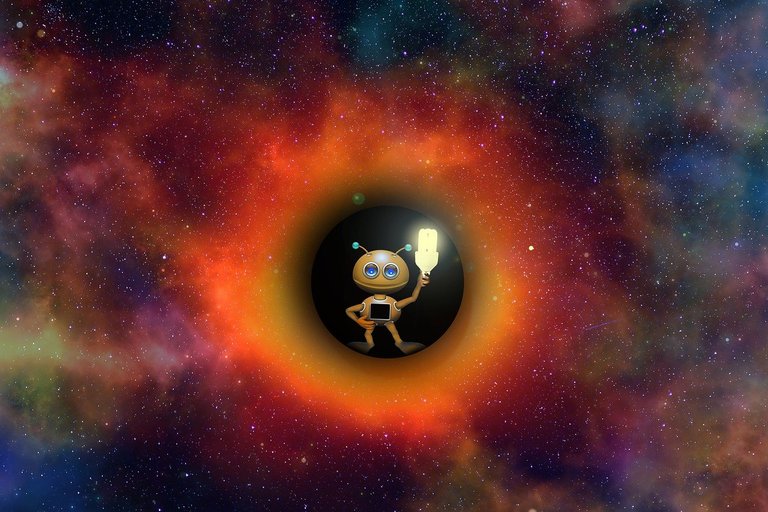
If we light a candle, a flash of light emanates from it and travels in all directions. Like a bubble that grows in all directions at the speed of light.

A 3 dimensional bubble which would surround us completely. And if we are inside this bubble, it would be impossible for us to get out of it, because we would have to exceed the speed of light to do such a thing. If we only look at that bubble with a 2 dimensional slice of space. The bubble would be forming a circle that grows all around us.
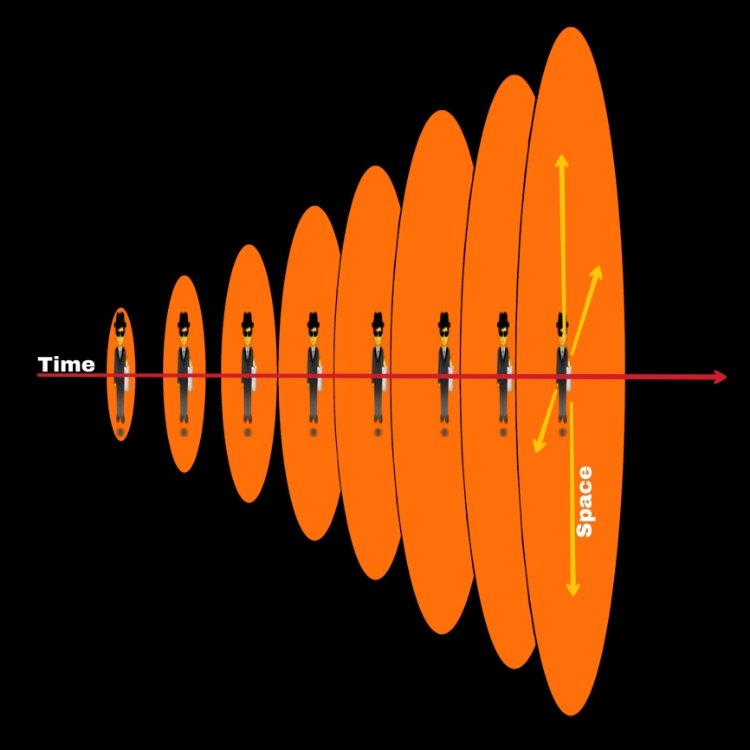
If we take multiple slices of that event across time, like multiple still images of that light circle growing as the light travels, stacking the images one after the other, we can construct a diagram in which the bubble of light that grows as time passes, forms a cone.
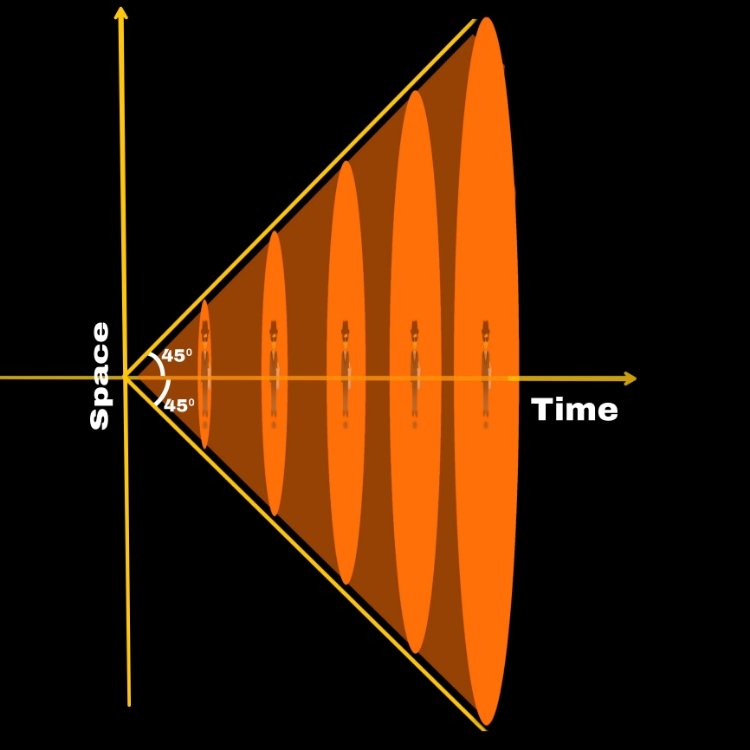
This cone widens from the past towards the future, and inside of it we trace a trajectory through time.
The sides of the cone are tilted at 45°, because for any given amount of time, light always travels a set distance. In one year, light will always travel a distance of “one light year” through space.
This type of object is called a light cone. As time passes, the cone expands at the speed of light, and whatever we do, our path remains bounded by it. It's impossible to escape it.

In relativity, these light cones are essential to understand the structure of the universe. They restrict cause and effect relationships, as they are frame of reference independent. Meaning, if an event that occurred gets judged to be in the light cone of one observer, it will also be judged to be in the same light cone by any other observer.
Moreover, if an event occurs far from us on Earth such as a supernova explosion, for example. This event would have no effect on us until its light cone has reached Earth. Before that, no information about the explosion can reach us.
Since nothing can be transmitted faster than light, such an explosion can only be seen and detected on Earth as soon as we enter its light cone. Causality (the fact that one event can trigger another), is limited by the speed of light.
Light cones also allow us to understand the difference between the notions of “time” and “space”.
We can move through space freely in any direction we want. We can turn around, or trace a path that loops back on itself.
But through time, all objects are forced to move in the same direction. It is impossible to turn back, the arrow of time always moves from the past towards the future. The successive light cones force us to always move forward. There's no turning around because we are bound to remain within these light cones.

In an area where the universe is empty, with no gravity, its structure (space-time) is straight. Time and space form a symmetric rectilinear grid, and the light cones are all aligned in the same direction.
We can thus define "time" globally in this diagram, time goes from left to right.

But imagine now that the universe contains a very massive body, for instance the Earth.
Close to a massive body, the light cones are no longer aligned with each other. They curve more and more, bent by gravity.
Near a massive body, the direction of the light cones curves. In other words, "time" is bent towards the center of the planet. If an apple falls, although it was motionless at first, it is because its future points downwards.
Mass distorts the geometry of the universe, space and time become relative, their orientation depending on where we are, this is “general relativity”. The more massive a body is, the more it bends spacetime.
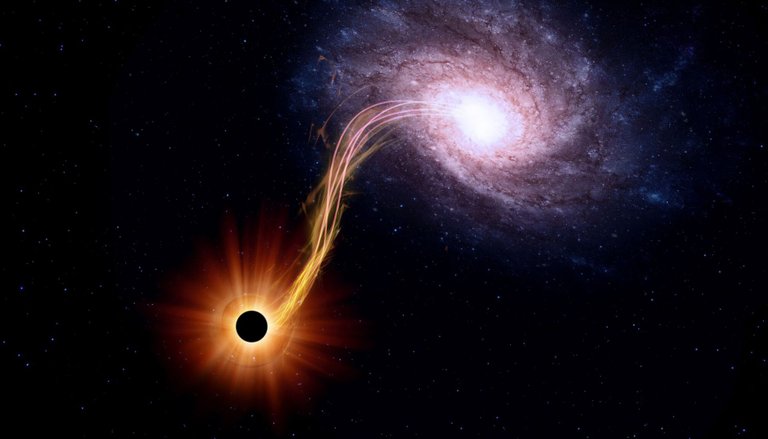
Blackholes:
Now, imagine a massive object that is very compact. Such a body would generate a curvature so strong that below a certain altitude, all light cones would be completely oriented downwards.
If we were to light a candle in such a place, all light rays, whatever their direction is, would be destined to fall towards the center. This is what we call a black hole.
A black hole is a spherical region of the universe, sort of a bubble in which the curvature of space-time drives all objects towards its center.
If we consider a 2 dimensional slice of space, the black hole manifests as a circle, which stays static, and traces a cylinder through spacetime.
The boundary of the black hole is called the “event horizon”.
Above the horizon some light rays can escape, but below the horizon all light is captured. In a black hole, light cones force the path of any object downwards. "Time" itself would be pointing towards the center of the black hole.
Let's consider two different points of view:
An astronaut who falls into the black hole, and that of a distant observer who is stationed at a great distance.
For the distant observer, gravity is very weak, and in his vicinity the grid of spacetime is flat. For him, time flows from left to right. The horizon of the black hole seems motionless, as it traces a straight line from the past to the future.
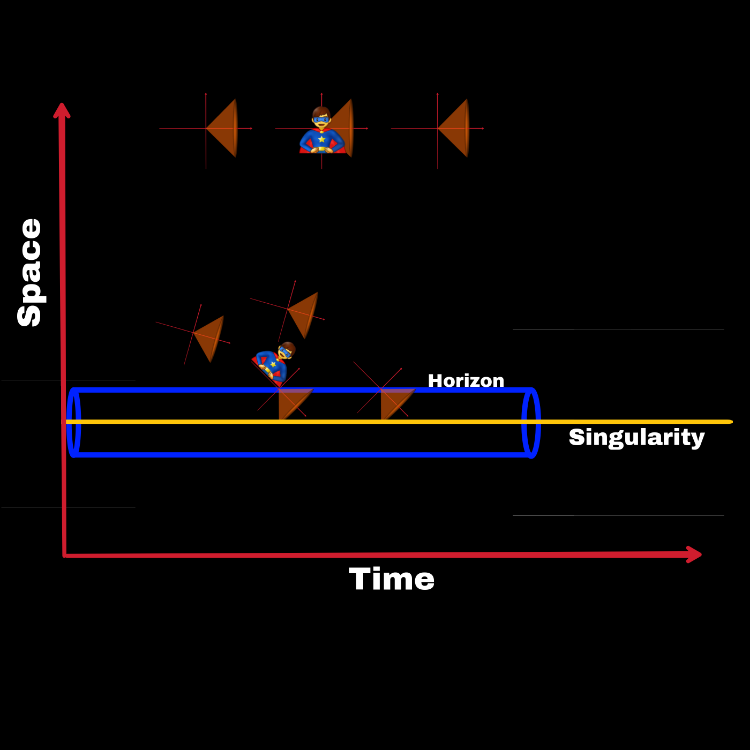
But if we take the perspective of the falling astronaut.
As he gets closer to the horizon, “time” and “space” curve more and more, bent by the presence of the black hole. When he finally reaches the horizon of the black hole, the astronaut does not realize it, but at that point, time and space are tilted at 45° for him.
For the astronaut, the horizon is not a horizontal line from the past to the future, it’s a diagonal which rises at 45°, exactly like the surface of a light cone.
While the distant observer sees the black hole as stationary, for the astronaut at the horizon, time and space are tilted, such that the black hole behaves like a light cone, which explains why it is impossible to escape.
When he crosses the horizon, the notions of time and space seem swapped around compared to the outside, time is now pointing downwards (which was a direction through space before) the horizon of the black hole is no longer a place in space, but a moment in our past, and the center of the black hole is no longer a point, but an event in our future, a destiny we cannot avoid. Below the horizon, all objects inevitably fall, because it is in this direction that their future lies.

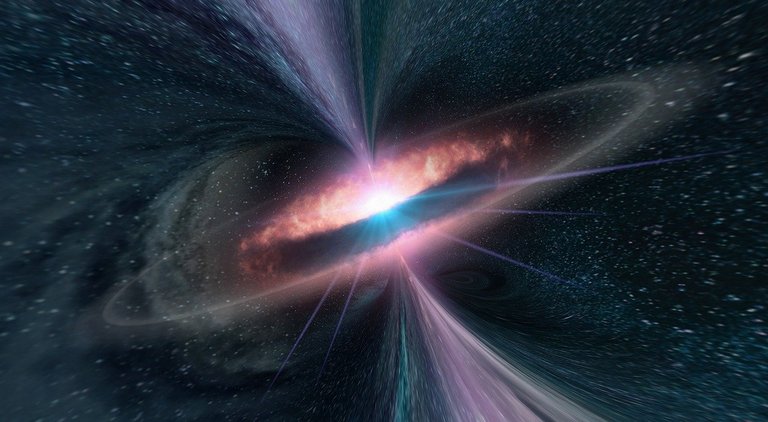
When a massive star collapses in on itself, it emits one last flash of light, a last bubble that tries to grow, but within a curved spacetime, bent by the mass of the star, such that the bubble seems static from the outside.
A black hole has formed. A light cone, rendered motionless by the curvature of spacetime.
If we straighten back the diagram, we recover a global direction of time, for flowing from left to right.
In this straightened diagram, we see explicitly that the horizon of the black hole forms a light cone, emerging from the collapsing star, and from the inside of which it is impossible to escape.
Once below the horizon, we are forced to hit the center of the black hole, a place where the curvature becomes so intense that our models no longer work. The center of the black hole, is an event in the future.
As soon as we cross the horizon, the rest of the universe is "history", it is in our past. We will never be able to access it again.
The only possible future is to fall, all the way into the singularity.

● See you on the other side ●
● •

© 2022 @yaziris.


